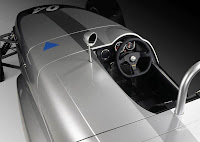Lexus IS430 Project, 2003
The Lexus IS is an entry-level luxury car / compact executive car produced by the Lexus marque of Toyota Motor Corporation and originally sold as the Toyota Altezza in Japan. It was introduced as an entry-level model to slot below the ES in the Lexus lineup and to compete against the BMW 3 Series, Mercedes-Benz C-Class and Nissan Skyline/Infiniti G35 sports sedans.
The first-generation Altezza (codename XE10) was launched in Japan in October 1998, while the Lexus IS 200 made its debut in Europe in 1999 and the IS 300 in North America in 2001. The second generation IS was launched in 2006. The Lexus range of cars are very successful in North America, but it is still lagging behind its German rivals in the rest of the world.
First generation
European and North American-market Lexus IS vehicles, as well as the Japanese hatchback/station wagon version called the Gita (called Lexus IS Sportcross in the U.S. and Europe) were only available in the 6-cylinder versions. US and European sales of the Lexus IS 300 were disappointing. In the American market, after hitting a high of 22,486 units in 2001, IS sales dropped below the 10,000-unit mark in 2004. The IS200 fared better in Europe and Asia, but still fell well short of the sales volume achieved by the Mercedes-Benz C-Class and other, mostly German-made competitors.
Second generation
The IS was redesigned for the 2006 model year and was introduced in the fall of 2005. The Toyota Altezza name ceased to be used with the introduction of the Lexus name in Japan. A pre-production example of the second generation IS model was shown in the 2005 Geneva Auto Show. The slow-selling SportCross station wagon version was dropped from the lineup worldwide.
Lexus IS430 Project
For the United States, three IS models are sold by Lexus:
- IS 250 - 2.5 L V6, 204 hp (152 kW), Rear wheel drive
- IS 250 AWD - 2.5 L 4GR-FSE V6 with all wheel drive, 204 hp (152 kW)
- IS 350 - 3.5 L 2GR-FSE V6, 306 hp (228 kW), Rear wheel drive
In the United Kingdom and parts of Europe, 2 models are sold by Lexus:
- IS 250 - 2.5 L V6, 204 hp (152 kW), Rear wheel drive
- IS 220d - 2.2 L Inline-4, 175 hp (130 kW), Rear wheel drive. Manual transmission only.
The IS 250 RWD comes standard with a 6-speed manual transmission, and a 6-speed automatic transmission is available as an option. The IS 250 AWD and the IS 350 are only available with the 6-speed automatic. A precrash system is a novelty in the market.
The IS 350's performance has been admirable, and its acceleration is class-leading. Some say this marks Lexus' first foray into the sport compact market that compares fairly well with its German competitors. However, prevailing criticisms are that its steering is not as communicative as that of the BMW 3 Series, its stability and traction control systems cannot be fully disabled, and that the higher-performance IS 350 is only offered with an automatic transmission.
However, the stability control system/traction control system can be disabled through non-conventional methods by using a code during engine start. This involves starting the car with the parking brake engaged, releasing the parking brake, pushing the brake pedal twice, holding it on the second push, engaging the parking brake twice, holding it on the second, and repeating until the vehicle traction light appears on the dash. This will effectively disable the system until the car is turned off. It is also criticised for poor packaging as it has the least boot space in its segment by a significant margin.

















































